I am trying to replicate a lake food web model published here. The model represents two food chains (littoral vs pelagic), connected by a top predator (fish). I have coded the model but when I run it after 2-3 time steps the model produces NaN. I have been through my code many times looking for issues with parentheses etc. but can't find the problem.
If I set the fish initial abundance to 0 the model runs, so I assume the issue must be with the fish component of the model.
Here are the equations:
Ap = pelagic resource, Z = pelagic zooplankton, Pp = pelagic predator, F = fish, Al = littoral resource, I = invertebrate, Pl = littoral predator.
Here is my attempt at coding the model:
library(deSolve)
# define the model
vade_2005_model <- function(Time, State, Pars){
with(as.list(c(State, Pars)), {
# pelagic components -----------------------------------------------
# resource
pel_res_dt <- (rPel * AP * (1 - (AP/(KT * q)))) - (aZP * ((Z * AP)/(AP + bZP)))
# zooplankton
pel_zoo_dt <- (ef * aZP * ((Z * AP)/(AP + bZP))) - (dZP * Z) - (aPP * ((PP * Z)/(Z + bPP)))
# pelagic predator (PP)
pel_PP_dt <- (ef * aPP * ((PP * Z)/(Z + bPP))) - (dPP * PP) - (aFP * del * ((fish * PP)/(PP + bFA)))
# top predator - fish ---------------------------------------------
fish_dt <- (ef * ((del * aFP * ((PP * fish)/(PP * bFA))) + ((1 - del) * aFL * ((PL * fish)/(PL * bFA))))) - (dFA * fish)
# Littoral component -----------------------------------------------
# resource
lit_res_dt <- (rLit * AL * (1 - (AL/(KT * (1 - q))))) - (aIL * ((I * AL)/(AL + bIL)))
# littoral invert
lit_inv_dt <- (ef * aIL * ((I * AL)/(AL + bIL))) - (dIL * I) - (aPL * ((PL * I)/(I + bPL)))
# littoral predator (PL)
lit_PL_dt <- (ef * aPL * ((PL * I)/(I + bPL))) - (dPL * PL) - (aFL * (1 - del) * ((fish * PL)/(PL + bFA)))
list(c(pel_res_dt, pel_zoo_dt, pel_PP_dt,
fish_dt,
lit_res_dt, lit_inv_dt, lit_PL_dt))
})
}
# model parameters (taken from the manuscript)
pars = c(rPel = 1.0, # per capital growth rate of pelagic resource
rLit = 0.8, # per capital growth rate of littoral resource
aZP = 1.55, # Attack rate of zooplankton (in pelagic)
aPP = 1.35, # Attack rate of PP (in pelagic)
aFP = 1.05, # Attack rate of fish (in pelagic)
aFL = 1.0, # Attack rate of fish (in littoral)
aIL = 1.45, # Attack rate of invert (in littoral)
aPL = 1.25, # Attack rate of PL (in littoral)
bZP = 0.2, # Half saturation rate of zooplankton (in pelagic)
bPP = 0.2, # Half saturation rate of PP (in pelagic)
bFA = 0.2, # Half saturation rate of fish (in all)
bIL = 0.2, # Half saturation rate of invert (in littoral)
bPL = 0.2, # Half saturation rate of PL (in littoral)
dZP = 0.6, # biomass loss rate of zooplankton (in pelagic)
dPP = 0.15, # biomass loss rate of PP (in pelagic)
dPL = 0.15, # biomass loss rate of PL (in littoral)
dIL = 0.6, # biomass loss rate of invert (in littoral)
dFA = 0.1, # biomass loss rate of fish (all habitat)
ef = 0.8, # conversion efficiency of resource biomass into consumer biomass
del = 0.5, # fish preference (1 = PP, 0 = PL)
KT = 1, # lake carrying capacity
q = 0.5 # prop. productivity in pelagic food chain
)
# initial densities (assumed as not given in the manuscript)
yini <- c(AP = 0.5,
Z = 0.5,
PP = 0.5,
fish = 0.5,
AL = 0.5,
I = 0.5,
PL = 0.5
)
# time steps
times <- seq(0, 1000, by = 1)
# run model
out <- ode(yini, times, vade_2005_model, pars, method = "ode45")
out
If anyone can see where I have gone wrong it would be much appreciated!


